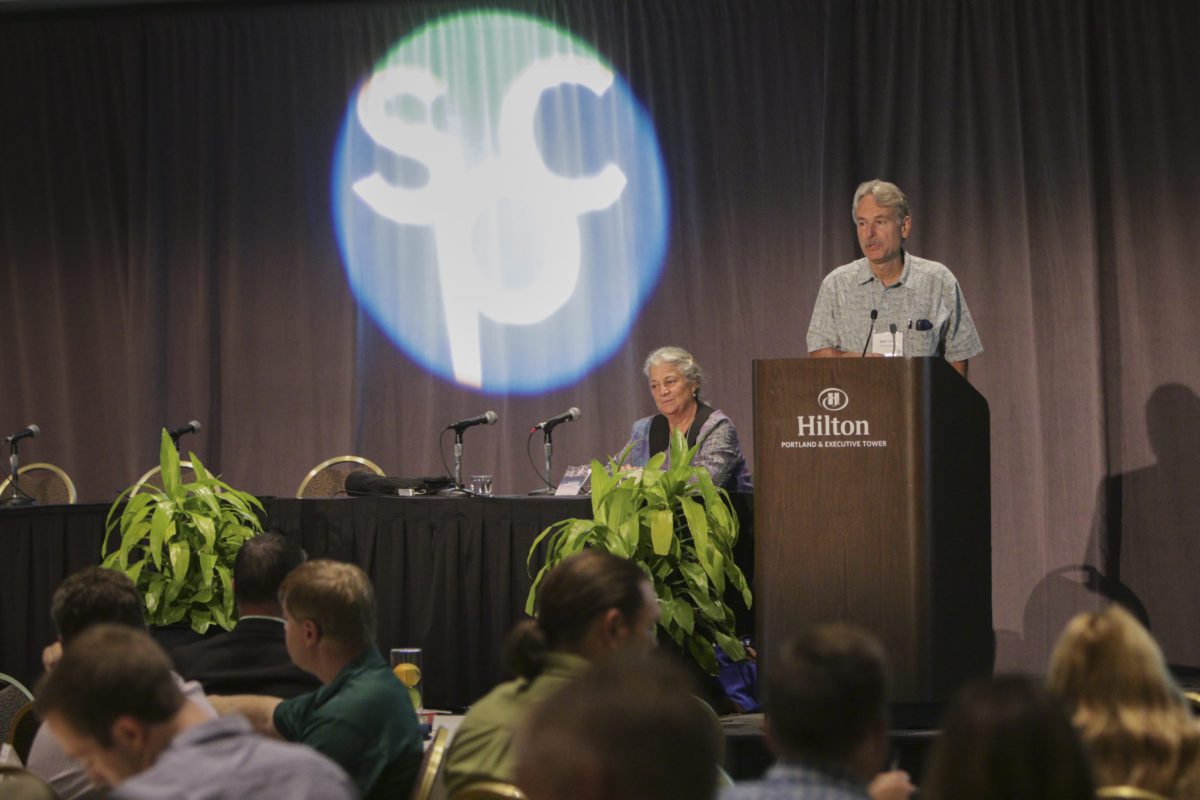On September 20th, California’s state agency CalRecycle approved a formal recommendation to pursue a new course of action towards its aggressive target of 50% packaging waste diversion by 2020, and extended producer responsibility (EPR) is officially on the docket as a potential next step for California. That same day, SPC Advance attendees had the opportunity to hear from Jim Hill, Senior Recycling Specialist at CalRecycle. He addressed the uncertainty – and perhaps at least a small amount of angst – from an audience that tends to be adamant that alternatives to EPR are the way to go.
Jim asked the audience to tap the brakes a little bit. It’s true, he says, that EPR is under strong consideration by the agency. But there are two alternatives that are also under consideration: landfill bans on recyclable packaging, and minimum recycled content requirements. He also reviewed their plastics market development payment program and recycling development zones, which offer interesting opportunities for industry, and reminded the audience of the other two policy drivers: greenhouse gas reduction and marine plastic pollution reduction. The audience was also reminded that CalRecycle engaged with industry in a broad dialogue on the effectiveness of voluntary efforts for packaging waste diversion, and CalRecycle’s ultimate opinion was that industry initiatives did not identify specific activities to meet the reduction goal, identify clear performance metrics, set timelines or offer funding ideas beyond current taxpayer funding. Industry responded with suggestions that CalRecycle data on packaging disposal was flawed and their biggest opportunity for drastic increases in diversion is in organic waste, not packaging.
Despite CalRecycle’s overall opinion of industry efforts, the American Chemistry Council’s WRAP program for plastics bags and film, to which the SPC has strong ties through How2Recycle, seems to have made an impression. Jim addressed the idea that any California program could have exceptions for certain types of packaging, and it seems as though bags and film could be one.
Regardless of what happens, it appears we are at a significant turning point in the U.S. landscape of regulation on packaging waste and recovery. California is making a strong statement. One way or another, the Golden State is determined to reduce their packaging waste by half by 2020. The plan for doing so will be in place by 2017. It will be an interesting year to come.
Categories
Extended Producer Coming to California? Maybe, says CalRecycle’s Jim Hill


